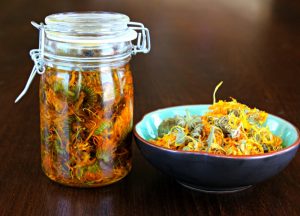Dry skin is uncomfortable. It itches. It looks terrible. It makes you miserable.
It’s got to go.
Curing dry skin sounds like it should be simple; add moisturizer and you’re done, right? Sadly, if that were the case, then dry skin wouldn’t continually plague millions of people around the world. Fighting back against the condition can often be a case of trial and error. If you’re looking for something new to try, here are five potent natural remedies that might have the solution to your dry skin woes…
- Coconut Oil

Let’s face it: coconut oil is probably the most recommended item on the internet. If you were to believe everything you read about it, you’d be convinced it’s the cure for every ailment known to man.
While coconut oil’s prowess at curing all manner of different maladies is doubtful, the fact that it’s beneficial to skin isn’t. Like all oils, coconut oil traps moisture when applied to the skin. Apply it after a shower onto any rough patches; you should see and feel a difference immediately.
- Beeswax
Beeswax is a humectant, meaning it binds water and helps trap it on your skin. This can make a huge difference to any dry skin problems you’re experiencing. The one downside is that it’s not exactly fuss-free; you’re going to need to adapt the solid beeswax into a usable formula. A simple recipe for your own skin-soothing balm should look something like this:
Required
- A double boiler (also called a bain-marie).
- One cup of beeswax pellets.
- 1/2 cup of an oil of your choice. Sweet almond or olive oil are recommended.
To Make
- Use a double boiler to heat the beeswax.
- When the beeswax has completely melted, slowly add the oil.
- Stir until the beeswax and oil have blended.
- Pour the mixture into a glass container and allow to cool.
This recipe should produce a thick but spreadable balm that helps protect your dry skin from further damage, while helping to heal any existing patches.
- Honey
Honey has been used medicinally for thousands of years – the ancient Egyptians, for example, are documented as having used it. Like beeswax, honey is a humectant, so it can work wonders for your skin. Thanks to its mild anesthetic qualities, it’s particularly useful if you have patches that are cracked and sore.
Use raw honey for the best results. Pour over the affected area and let it dry, until it’s hard to the touch. If your raw honey is gritty and solidified, you can use a double boiler to briefly melt it prior to applying to skin — though be sure before pouring that it is at a comfortable temperature. Test the heat of the honey on a small area first to ensure it doesn’t burn.
- Oatmeal
Most of us are familiar with the idea of an oatmeal bath helping to ease the itching from chicken pox – but the same remedy can be used for dry skin, too.
Using oatmeal for skin is incredibly simple. Prepare the oats as you would for a meal, cool, then apply directly to the affected area. Wrap with a bandage or muslin cloth, forming a kind of poultice. Leave this for as long as is comfortable; it should provide an immediate relief, but the longer you leave it, the better chance it has of aiding healing.
- Calendula Oil
Calendula oil is a rather niche product; you’re unlikely to find it on the shelves of the grocery store. It’s produced from marigolds and has a rich history of being included in balms and salves to help heal the skin.
It’s possible to buy bottles of calendula oil by itself, though this can be expensive. Always read the label, as sometimes the calendula may be cut with a cheaper oil to make its price more attractive. If you want to ensure a pure oil, then you can always make it yourself.
Required
- Calendula petals (you can harvest these from your own flowers or buy from eBay – just ensure they’re dried, not fresh)
- A glass jar
- Oil of your choice – olive and sweet almond are, again, good options. Coconut oil is not suitable for this as it is generally solid at room temperature.
To Make
- Place the calendula petals in the jar.
- Cover the petals with the oil, until they are submerged, with an additional inch of oil on top. The petals should be damp and submerged, but not swimming in the oil.
- Seal the jar with the lid.
- Store on a sunny windowsill for four to six weeks to infuse. Shake occasionally for extra potency.
- Strain the herbs.
- Use the oil as required.
This might sound like a long time to wait, but it will be worth it. You can speed things up by heating the petals and oil in a double boiler, but this method tends to have more variable results.
In Conclusion
Hopefully, the above options have inspired you to create your own, all-natural dry skin solutions. Experiment to see which one works best for you; when you’ve found it, you can kiss your dry skin concerns goodbye.

